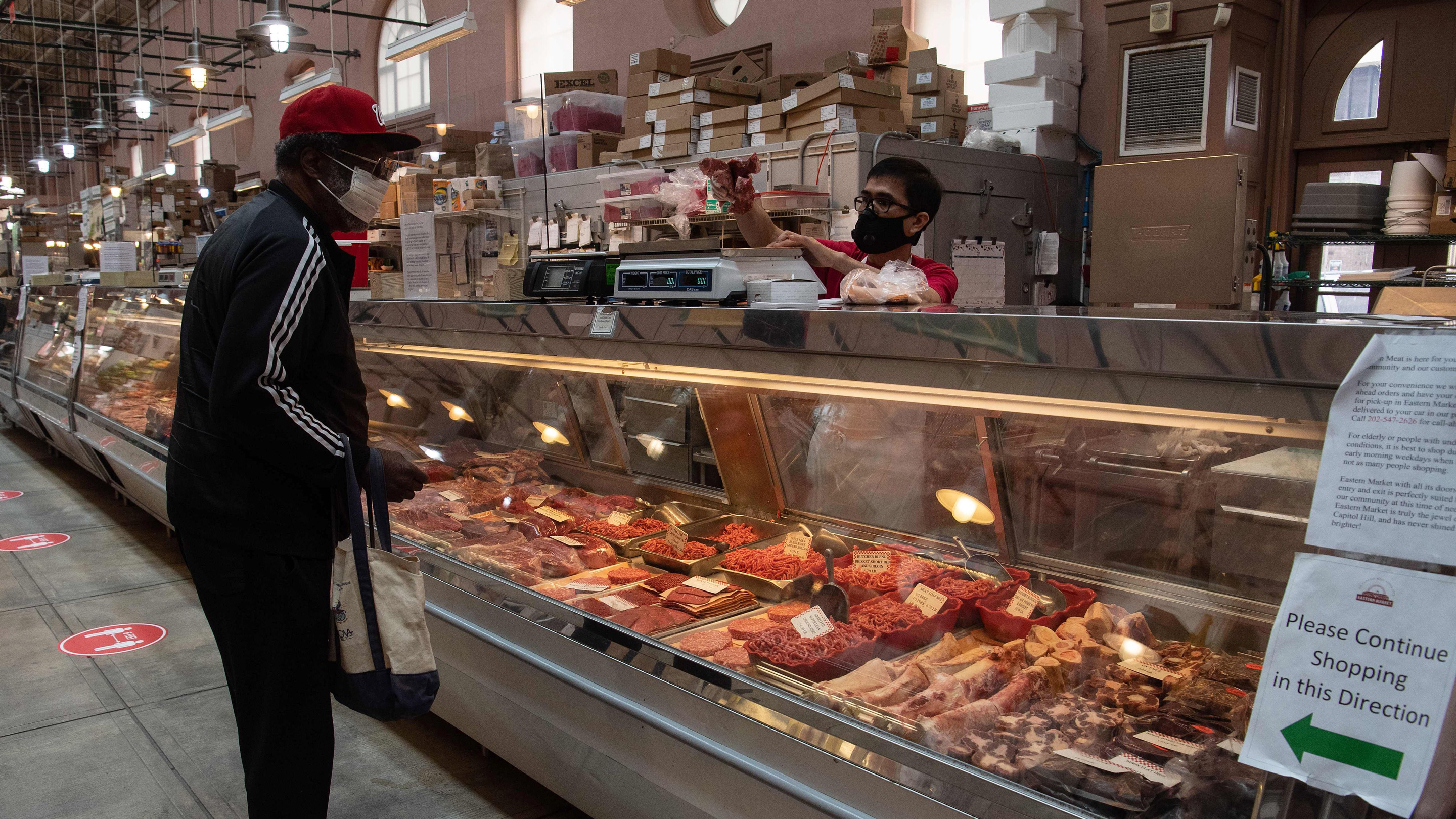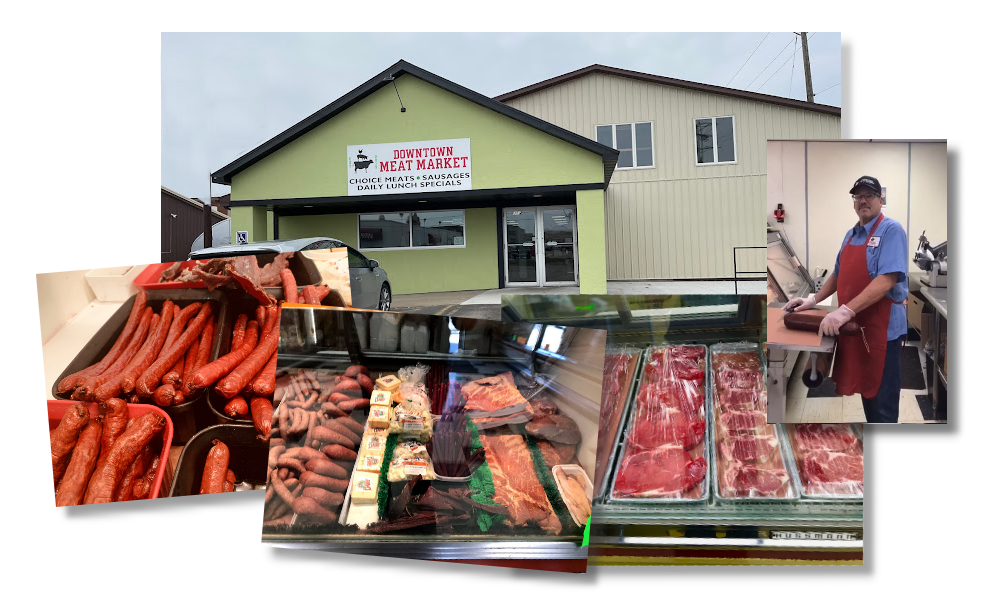Discover the Neighborhood Taste at Bagley Farms Meat Market Edwardsville IL: Fresh and Delicious
Discover the Neighborhood Taste at Bagley Farms Meat Market Edwardsville IL: Fresh and Delicious
Blog Article
Discover the Art of the Butcher's Cut in a Modern Meat Market
In the ever-evolving landscape of modern-day meat markets, the butcher's cut has transcended its typical roots, combining olden craftsmanship with modern practices. What genuinely sets the modern-day butcher apart is their capability to forge a much deeper link between customers and the origins of their meat.
Development of Butchery Strategies

The mid-20th century saw butchery techniques further refined by clinical understandings right into muscular tissue biology and meat aging, improving both tenderness and taste. Innovations like vacuum cleaner product packaging and refrigeration prolonged item shelf-life, permitting butchers to expand offerings and enhance high quality control. This duration additionally noted the rise of customized devices, such as band saws and meat slicers, which enhanced precision and performance in meat processing.
The 21st century has presented digital technology right into the butchery world. Computerized systems currently help in tracking pet provenance and optimizing cuts to fulfill specific consumer choices. Additionally, a resurgence in artisanal butchery has actually emerged, mixing conventional abilities with contemporary understanding to accommodate customers seeking moral and sustainable meat alternatives. This evolution emphasizes a dynamic interplay in between tradition and innovation, meeting modern demands while maintaining the craft's heritage.

Comprehending Meat Cuts

Understanding the intricacies of meat cuts is essential for both butchers and consumers seeking quality and worth. Each cut originates from a various part of the animal, presenting one-of-a-kind tastes, textures, and cooking approaches. Proficiency of these differences not just boosts culinary experiences but additionally takes full advantage of the utility of each carcass. For butchers, precise cuts mirror ability and respect for the craft, making certain marginal waste and optimal return.
The primary groups of meat cuts include primitive, sub-primal, and retail cuts. Butchers then damage these down further into sub-primal cuts, prior to finally creating retail cuts readily available to consumers, like ribeye or tenderloin.
Recognizing muscle mass composition is vital; muscles utilized extra frequently by the animal often tend to be harder and are best suited for slow-moving food preparation approaches, while less-used muscular tissues, like those discovered in the loin, are a lot more tender and ideal for barbecuing or roasting. Knowledge with these differences empowers consumers to make educated selections, enhancing their culinary ventures.
Picking Quality Meat
Picking the appropriate meat entails even more than simply selecting an aesthetically attractive item from the screen. The art of choosing high quality meat needs a discerning eye and knowledge of particular characteristics that represent freshness and excellence. Firstly, focus on the color; beef should have an intense, cherry-red hue, while lamb needs to show a soft pink tone, and pork a light pink. This indicates the meat is fresh and hasn't been revealed to oxygen for as well long.
Secondly, take into consideration the marbling, which describes the white flecks of fat within the muscular tissue. Appropriate marbling is an essential indicator of inflammation and flavor, as it thaws during food preparation, enhancing the meat's juiciness. Bear in mind, greater marbling frequently click this correlates with exceptional high quality cuts, such as USDA Prime.
Texture is one more crucial variable; meat ought to really feel solid to the touch, not slimed or excessively soft. Additionally, bear in mind the scent. Fresh meat must have a clean, neutral odor, without any kind of sour or off-putting odors.
Combining Cuts With Cooking Approaches
Effectively pairing cuts of meat with the suitable cooking techniques is crucial for achieving optimal flavor and structure. These techniques boost the meat's natural flavors and guarantee a juicy surface.
On the other hand, harder cuts like brisket and chuck roast are abundant in collagen, which damages down into gelatin when cooked gradually. These cuts are perfect for braising or sluggish roasting, allowing the meat to tenderize in time and develop deep, complex flavors. Cuts such as brief ribs and pork shoulder get on well with slow-cooking techniques, where extended cooking times change their robust structures into delicious meals.
Lamb shanks and oxtail, which need extended cooking to tenderize, are perfect prospects for cooking or slow-moving simmering. These approaches coax out abundant, hearty flavors while keeping dampness. By understanding the one-of-a-kind features of each cut, cooks and home cooks alike can boost their cooking developments, guaranteeing each dish is both pleasing and remarkable.
The Butcher's Duty Today
Navigating the developing landscape of the modern-day meat market, the butcher's function today extends past simple prep work of cuts. Contemporary butchers are culinary craftsmens, educators, and supporters for sustainable practices. They connect the gap in between the farm and the fork by ensuring honest sourcing, understanding animal husbandry, and focusing on openness in the supply chain. This change shows the expanding consumer need for high quality over amount, where provenance and animal well-being are vital.
Along with crafting accurate cuts, butchers currently engage directly with consumers, providing cooking guidance and tailoring choices to match individual requirements and choices. Their expertise more information in meat aging, marbling, and flavor accounts encourages consumers to make informed decisions, enhancing their cooking experiences. This personalized service exhibits the butcher's evolving function as a relied on advisor in the cooking area.
Additionally, butchers are crucial in reducing waste, using entire pets to create diverse products such as sausages and stocks - bagley farms meat market edwardsville il. This see this here thorough approach not only appreciates the animal however additionally straightens with contemporary sustainability goals. This way, the contemporary butcher personifies both practice and innovation, adapting to an ever-changing market while preserving the creativity and stability of their craft

Conclusion
The modern butcher's craft elaborately weaves conventional techniques with modern-day advancements, emphasizing lasting methods and ethical sourcing. Proficiency in comprehending diverse meat cuts and top quality signs empowers butchers to give educated recommendations, straightening particular cuts with optimal food preparation methods. This expertise not only elevates cooking experiences but likewise strengthens the link between customers and the beginnings of their food. By honoring historic methods while welcoming contemporary needs, the butcher's role stays vital in today's advanced meat market.
Report this page